6 Trauma informed practice in action with Erik Gordon
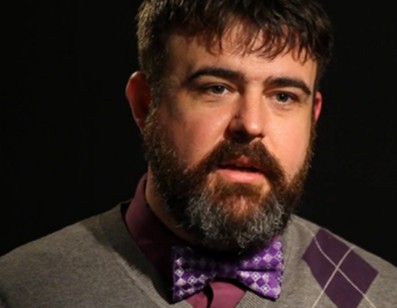
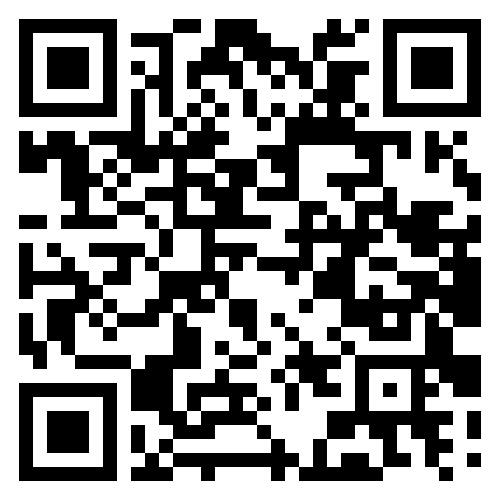 Leading the way in trauma-informed practice is Lincoln High School in Washington. The school, its student’s and its staff were the subjects of the documentary “Paper Tigers”, set within and around the campus of Lincoln alternative high school in the rural community of Walla Walla in Washington. The documentary “Paper Tigers” attempts to answer the following questions. What does it mean to be a trauma-informed school? How do you educate teens whose childhood experience has left them with a brain and body ill-suited to learning? Erik Gordon, a science teacher from the Lincoln School, explains how the school has adopted a trauma-informed approach to curriculum development and disciplinary practices.
Leading the way in trauma-informed practice is Lincoln High School in Washington. The school, its student’s and its staff were the subjects of the documentary “Paper Tigers”, set within and around the campus of Lincoln alternative high school in the rural community of Walla Walla in Washington. The documentary “Paper Tigers” attempts to answer the following questions. What does it mean to be a trauma-informed school? How do you educate teens whose childhood experience has left them with a brain and body ill-suited to learning? Erik Gordon, a science teacher from the Lincoln School, explains how the school has adopted a trauma-informed approach to curriculum development and disciplinary practices.
Learn more about the Lincoln High School in Walla Walla, Washington by clicking or scanning the QR code.
Mr. Gordon: I teach science at Lincoln high school and our school functions as an alternative school to a traditional high school in our community. Traditional high schools have about 1400 students on campus, while our school has just under 200 students. We also have a large turnover of students throughout the year. Our community is rural America, and the region consists of wheat fields, wheat farmers, wine distributors, and a small bit of tourism. The community population is roughly 34 – 35,000, mostly politically conservative. It’s mainly agricultural, which contributes to 30 – 40% of our Latino student population. The rest of our people are white and mostly live below the poverty line.
Paper Tigers
Dr. Krishnamoorthy: I’d like to start with “Paper Tigers”. There was much interest in it here in Australia and watching you through the documentary was inspiring. Can you tell us how the documentary came about and how the teachers and students felt about it being made?
Mr. Gordon: It all started around 2012, after Jane Stevens wrote a piece on our work at Lincoln. That article began to attract national attention. Around the same time, Karen Hester and James Redford were working on a documentary about Adverse Childhood Experiences (ACEs). As part of that project, they visited a few schools—and when they came to Lincoln, they saw something that really moved them.
At first, the plan was simple: Lincoln would be one small part of a larger film. Just a segment. But once they met our students, everything changed. They saw real stories of struggle and strength—and decided to focus on us more deeply. That’s how Paper Tigers came to be.
There was a lot of hesitation at first. Understandably. Students and staff were nervous. We worried it would feel like reality TV, that it might sensationalise our kids’ lives. Being on camera is vulnerable enough—but this was personal. Really personal. But the filmmakers—James Redford and his wife—spent time with us. They listened. They showed up every day. And slowly, they built trust. Much of what made it into the film was recorded by our students themselves, using handheld cameras. It wasn’t scripted or polished. It was just… real.
Over time, our students opened up. I remember staff saying, “If this helps one person understand what trauma-informed education looks like, then it’s worth it.” That spirit of wanting to help others drove their decision to share their stories.
“When you lead with connection, and when students feel seen and safe, transformation is possible.”
To be honest, if I had one critique of the film, it’s that it made us look a bit too good. Teaching in a trauma-informed school isn’t always neat or inspiring. It’s often messy. Some days feel like setbacks. But what’s true—and what Paper Tigers captured—is that when you lead with connection, and when students feel seen and safe, transformation is possible.

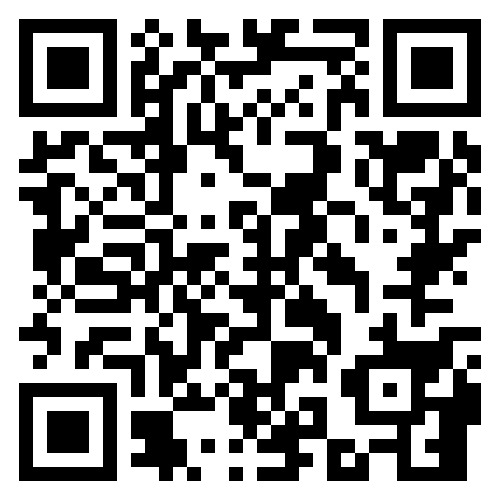
Watch the trailer for “Paper Tigers”—a groundbreaking documentary that follows Lincoln High School’s journey to becoming trauma-informed. Featuring Erik Gordon and students, it brings to life the challenges and triumphs of relational education.
Watch here or scan the QR code to learn more about the documentary.
Mitigating the Impacts of Trauma on Learning
Dr. Krishnamoorthy: We had the chance to speak with James Redford, and I remember something powerful he said. He told us he didn’t want Paper Tigers to just deliver the bad news about trauma. He wanted to offer hope—a way forward. And that’s what he saw at Lincoln: in the students, the teachers, and the school culture.
There’s a lot of conversation these days about trauma and its impact on young people. But for a new teacher walking into a school like Lincoln, it can be overwhelming. How do you help them begin to understand trauma in a way that makes sense for their practice?
Mr. Gordon: That’s such an important question—because if you don’t understand what’s going on under the surface, it’s easy to misread what you see in front of you.
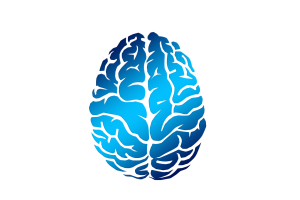
When I talk to new teachers, I often start with the brain. Not in a clinical way—but in a way that helps make sense of student behaviour. I explain that the brain has different parts that develop over time. When a young person experiences overwhelming stress or trauma—especially early in life—the parts of the brain responsible for survival can become overactive. That’s the part of the brain that’s always scanning for danger. When it senses a threat, even a small one, it shuts down the thinking brain—what we use for reasoning, reflection, and learning.
So when a student suddenly lashes out, shuts down, or walks away, it’s not because they’re being defiant. Their body and brain might be reacting to something that reminds them—consciously or unconsciously—of something painful or unsafe. It might have nothing to do with the teacher or the classroom at all.
The instinct for many adults is to take that behaviour personally. To assume, “I must be doing something wrong.” But once teachers understand that the behaviour might be rooted in something from the past—and not the present—it helps them respond with empathy rather than control. Understanding the science behind trauma helps shift the question from “What’s wrong with this student?” to “What happened to this student—and what do they need right now to feel safe?” That shift changes everything.
Student-Teacher Relationships
Dr. Krishnamoorthy: In our own work, we often see that once teachers understand the science of trauma, it still takes a specific moment—a student or an incident—that brings it home. It’s like a lightbulb goes off, and they start seeing things differently. Do you have a story or moment where that shift became real for you?
Mr. Gordon: In general, my students are amazing. They’re awesome. They trust me —just as much as I trust them. Once that relationship is established, it’s clear: people who care about each other don’t treat each other the way some of my students sometimes treat me.
There’s one student in particular—I know he really cares about me. And at this point, I don’t even need brain science to tell when something’s wrong. When he acts out, it’s obvious that something deeper is going on, because that’s not how people who enjoy each other’s company behave.
In those moments, I must let go of my own emotional reaction—the part of me that thinks, “This student is doing this just to annoy me,” or “He’s trying to wreck my lesson.” That thinking doesn’t hold up. Two people who have a strong connection don’t behave that way unless something else—something bigger than this moment—is happening.
Once I understood that, my concern shifted. I stopped focusing on “How do I get control of my classroom right now?” and started asking, “What’s going on with this student that has them hurting so much they would act like this toward someone they care about?” Because that kind of interaction isn’t natural when there’s trust.
That’s usually where I begin with students in those moments. I’ll say, “What’s going on? This sucks.” Or “It seems like you feel horrible inside right now. Forget me. Forget what just happened between us. I may not even know what set you off—and that’s okay. Let’s just focus on getting you back to feeling okay.”
That’s what my student population is like on any given day. And when I think about one of those interactions, it reminds me of many others just like it.

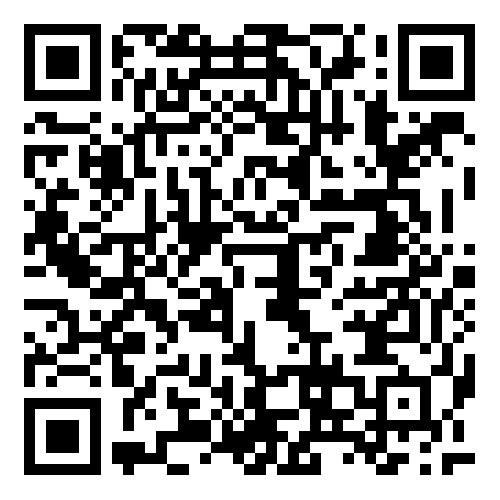
Explore this resource from the Australian Childhood Foundation on how trauma-informed classrooms can create space for safety, regulation, and belonging—just like the de-escalation and ISS rooms at Lincoln High.
Go to the website or scan the QR code for access.
Mindset Changes for Educators
Dr. Krishnamoorthy: What changes have occurred at your school over time that have helped support its transition to being trauma-informed—particularly around the challenge of not punishing students, even in the face of behaviours that may appear rude or disrespectful to staff?
Mr. Gordon: In most communities here in the U.S., you’ll find a traditional high school and an alternative high school. Alternative schools tend to be where students get sent when they’re perceived as disruptive—when they’re “blowing up” in class or preventing others from learning. It’s like the system wants to skim those students off the top and stick them somewhere out of sight—often in portable buildings tucked behind the main school. We literally create a physical space that tells them they’re less valuable.
Typically, the teachers in those settings have self-selected to be there. They’ve chosen to work with students that others have given up on. And that matters—because if they weren’t already inclined to approach things differently, they wouldn’t have volunteered in the first place.
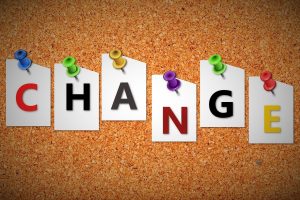
At the same time, our education system has some structural quirks. Here, teacher unions are strong, which means you can’t easily fire a teacher. What you can do is move them laterally—so sometimes, the teachers a district doesn’t want in the main high school get reassigned to the alternative school. And unfortunately, in some cases, they’re placed there with the unspoken hope that they’ll burn out and quit on their own. That dynamic creates a mix: you’ve got teachers who deeply want to be there, and others who haven’t made the mindset shift.
At our school, a major turning point was when leadership made it clear: supporting students is our priority. That became the expectation and the mission. Now, that shift wasn’t easy for everyone. Some teachers who couldn’t adjust filed complaints with the union. They felt unsupported because they could no longer rely on punitive systems—like sending a student to the office with a threat. That model of “You better behave, or else…” just didn’t work anymore.
And when students started calling that bluff—standing up and saying things like “Fine, send me to the office”—those teachers felt lost. But in our school culture, those old narratives didn’t gain traction. You couldn’t go into the staff room and vent about how awful a student was, because no one wanted to hear it. In meetings, the focus shifted from “How do we get rid of this student?” to “What does this student need, and how do we help them?”
Over time, teachers who couldn’t make that shift began to self-select out. They just didn’t feel at home in a system that prioritised relationships and healing over control. That said, we didn’t need as much training in why to build relationships—because most teachers here already believed in that. What they needed was the trauma-informed vocabulary and the neuroscience to back up what they were already doing. They needed to understand the why behind their instinct to connect.
One of the biggest structural changes we’ve made is with our in-school suspension (ISS) room. It’s no longer just a space for punishment. Now, it functions half as an ISS and half as a de-escalation space. It’s not just where students go to “serve time”—it’s where they go to cool down, reset, and return to class feeling more regulated and supported. That’s been a game-changer.

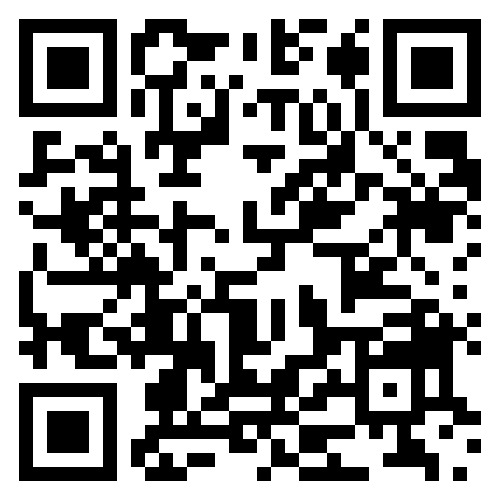
Watch this short video introducing Trauma-Informed Positive Behaviour Support (PBS)—a framework that combines the structure of school-wide behaviour systems with a trauma-informed lens. The video explains how trauma-informed PBS helps schools respond to challenging behaviour with empathy, structure, and proactive support. Because when we understand the why behind behaviour, we can offer the how for healing.
Watch the video or scan the QR code for access.
In-School Suspension (ISS) and Safe Space
Mr. Gordon: One of the biggest shifts we’ve made at our school is moving away from out-of-school suspension and rethinking how we respond when students make mistakes. Traditionally, if a student showed up to school high, the response might be to send them home for five days—essentially giving them a couch, a TV, and more weed. That doesn’t help anyone.
Instead, we say: No—we want you here.
Now, it’s a one-day in-school suspension (ISS), and the student spends that day with a staff member we’ve specifically chosen for their ability to build strong relationships, have hard conversations, and hold space in a way that’s almost therapeutic. They’re not trained therapists, but their role is deeply relational and supportive.
This isn’t about removing the consequence—it’s about delivering it in a way that keeps the student connected to the school community. I even use that space during class periods when needed. If a student needs to cool off, they can go there for the rest of the period and then return. It’s a short reset—like a light tap on the shoulder instead of a heavy punishment. It allows students to stay engaged and not miss out on essential learning.
 I’ve also set up my own science classroom with this philosophy in mind. One half of the room is for learning. The other half has soft couches, calm lighting, and a de-escalating vibe. It’s intentionally soothing. Students can self-select to step out and go to the ISS room when they need it. They don’t have to ask permission or explain themselves—they just know it’s there if they need it.
I’ve also set up my own science classroom with this philosophy in mind. One half of the room is for learning. The other half has soft couches, calm lighting, and a de-escalating vibe. It’s intentionally soothing. Students can self-select to step out and go to the ISS room when they need it. They don’t have to ask permission or explain themselves—they just know it’s there if they need it.
Because let’s be real: if a student walks into my classroom after learning their parent might be arrested and sent away, I can’t expect them to focus on science. It’s unreasonable to think my content is the most important thing in their life at that moment. So, instead, we offer them space. A place to regulate, reflect, and talk with staff. When they’re ready, they come back. That room has become a vital part of how we keep students in school and connected—even on their hardest days.
“If a student walks into my classroom after learning their parent might be arrested and sent away, I can’t expect them to focus on science. It’s unreasonable to think my content is the most important thing in their life at that moment. So, instead, we offer them space. A place to regulate, reflect, and talk with staff.”
Another important change we made was establishing a school-based health center about six years ago. It’s just for our students and staff. We have a rotating doctor, mental health nurses, and clinicians on site. It’s like a mini hospital, right here on campus, serving our 200 students. Kids can sign out any time—whether it’s for a physical issue, mental health support, or a scheduled counseling session. It’s another way we’ve committed to making school a place where students’ whole selves are seen and supported.
Health Hubs at School
Dr. Krishnamoorthy: Was the health clinic something the school was able to fund?
Mr. Gordon: No, not at all. As strange as it sounds, Washington state law actually prevents school districts from funding on-campus health centres. So ours had to be established as a non-profit. It operates completely independently from the district financially.
The director’s role is a full-time job in itself—constantly working to secure funding and support from the community just to keep the clinic running. That’s a daily struggle. The district wants it here, and thankfully, they’re starting to see the value and expand the model into other schools. But for now, it’s fully self-sustained. We depend on grants, donations, and partnerships to keep the doors open.
Dr. Krishnamoorthy: And how do you feel the health centre contributes to the school community?
Mr. Gordon: At our core, we’re trying to give students as many options in life as possible. That looks different depending on where a student is developmentally. Some need access to AP classes and college prep—they’re ready for that. But for so many of our students, the biggest barriers to success have nothing to do with academics.
They come to school, and the system expects us to deliver content. That’s what we’re trained to do as educators. But we know that trauma and unmet health needs are often the real things standing in the way. They need medical care. Mental health care. Basic resources. That’s where the health centre becomes essential—it fills the gaps the traditional system can’t.
Every Wednesday, our school has early release. While most schools use that time for professional development, we use it to talk about our students. Every staff member comes together to discuss the kids we’re worried about. We share what we’re seeing, what’s working, and what interventions are helping.
Our health centre clinicians are part of that conversation. They offer a clinical perspective. Sometimes we also have external community providers who support our students. Everyone contributes a piece of the puzzle. It’s an essential part of our trauma-informed process—it’s how we wrap around the student as a team.
Dr. Krishnamoorthy: Just before this interview started, I noticed a student came in asking for toiletries. It really struck me—how as educators, we can’t ignore basic needs. If a student’s hungry, doesn’t have clean clothes, or feels like they don’t fit in, it’s going to impact their ability to learn.
“Every staff member comes together to discuss the kids we’re worried about. We share what we’re seeing, what’s working, and what interventions are helping.”
Mr. Gordon: Exactly. Every Friday, we send students home with backpacks full of food. They just grab them on the way out, no questions asked. Community workers regularly bring in supplies—items that students use. We also have a dedicated room here on campus, stocked with food, clothing, toiletries—whatever they might need.
Right now, about 23–24% of our student population is homeless. That’s nearly a quarter of our school. For them to keep showing up and engaging in learning, their basic needs must be met. It’s not optional. It’s foundational.
Growing a Trauma-Informed School Culture
Mr. Gordon: There’s something I want to talk about that often gets overlooked—the role of value systems. Why we work with students the way we do, and how that has changed our staff over time, is deeply connected to values. You can’t ignore that part.
When we bring on new staff, the priority is alignment. We make sure everyone is on the same page about how we interact with students. Because there’s a certain mindset you need to work with disenchanted, hurt, angry, or depressed young people. For some educators, that comes naturally. For others, it doesn’t. And that’s okay—it’s about knowing your strengths and being honest about where you connect best.

Some teachers are drawn to students who are struggling emotionally. They find meaning in building trust with students who’ve been let down. Others may not form those deep connections, but they still do no harm. They understand the neuroscience. They know when a student is dysregulated, they need space. They don’t fight it. They don’t label the student as “bad.” They support the system even if they’re not the heart of it—and that matters too.
But here’s the key difference at our school: teachers who couldn’t align with that philosophy of care have moved on. The ones who stayed are here because they believe in it. This shift didn’t come from a program or a manual. It wasn’t a checklist. It was a values transformation—a change in how we see young people and our role in their lives.
People often visit our school looking for a how-to guide. They want the trauma-informed playbook. And we don’t have one—because what got us here wasn’t a formula. It was an organic process that started with asking: What do we truly believe about kids, especially those who are hurting.
If your core belief is, “My job is to take care of this student before anything else,” then everything else flows from that. If your first thought is, “What’s going on with this student, and how can I help them feel better?”—you’ll respond the right way, every time.
“People often visit our school looking for a how-to guide. They want the trauma-informed playbook. And we don’t have one—because what got us here wasn’t a formula. It was an organic process that started with asking: What do we truly believe about kids, especially those who are hurting.”
It’s not about perfect strategies. It’s about how deeply you hold that value inside you. And when your staff shares that value, even in the face of tough situations, they don’t take things personally. They stay grounded. And that’s what makes trauma-informed education possible—not just in policy, but in practice.
Trauma-Informed Advocacy
Dr. Krishnamoorthy: How have you been able to advocate for a trauma-informed way of working? From the outside, people often see this work as just another fad. They measure success by academic outcomes, not necessarily by how socially and emotionally regulated students are. How have you communicated the value and impact of your approach to others?
Mr. Gordon: That’s been a huge part of the journey within our school district. At first, the district didn’t really take us seriously. The general attitude was, “That’s nice. You guys are adorable. You do your trauma-informed thing over there.” They saw it as just another niche program—like every school has its thing.
But for us, it wasn’t a side initiative. It was the work. Our thing wasn’t robotics or college prep. Our thing was healing. It was putting broken kids back together and helping them feel whole again. That’s how we approached education. In contrast, the traditional high school in our district was all about getting students into top-tier colleges. That was their thing. And for a while, they couldn’t understand that what we were doing was equally valid—just rooted in different needs.
They struggled to grasp that loving students unconditionally wasn’t just a warm, fuzzy add-on. It was our operating system. It wasn’t something we did—it was how we did everything.
Then Paper Tigers came out. Suddenly, schools across the country were calling our district asking, “What’s going on at Lincoln? How can we do what they’re doing?” And that changed everything. It forced our district to pay attention.
It took a year and a half—maybe two—before the rest of the country understood what we were doing better than our own district did. Eventually, we had a change in leadership—a new superintendent, some new school board members—and that brought a real shift. They started to get it. But for a long time, other districts were more curious and more open to what we were doing than our own.
Dr. Krishnamoorthy: It’s amazing how much visibility can change the conversation. The documentary really helped others see the work and understand its value. It reminds me how powerful it is to share stories of what’s working.
Mr. Gordon: Absolutely. But we still run into resistance—especially in more conservative communities. People hear “trauma-informed” and immediately assume we’re enabling bad behaviour. That we’re too soft. That we’re coddling kids.
They don’t always see that what we’re doing is about boundaries and accountability—just delivered through relationships and care. Many of our students have never had a consistent adult who shows up for them. They’ve never been nurtured in a way that helps them regulate and feel safe. And yes, that can look different than what people are used to seeing in schools.

In Paper Tigers, you see us texting students. You see us saying things like, “I love you.” And for some, that feels uncomfortable in an educational setting. But there are safe, appropriate ways to express that care. I’ll say, “Love you, man” to a student walking out the door, and it lands. It doesn’t feel weird. It feels real. No student walks away from that feeling disrespected.
Somewhere between first grade and high school, we start treating relationships as purely professional. In elementary school, a teacher’s role is often like a second parent—nurturing, warm, emotionally close. Then in secondary school, it becomes transactional. We become “professional teachers,” and students become “professional students.” And that relational warmth gets lost.
But teenagers need connection just as much—maybe more. Yesterday, I pulled a student out into the hallway because he was being disruptive. I told him, “This isn’t me speaking as a teacher right now—this is me as Erik.” And I said, “You’re making it hard for me to love you right now. This isn’t the way to act. But I’m still here.”
That’s how you build real relationships—with honesty, care, and presence.
I’m not their buddy. I’m not trying to play Xbox with them. I’m not trying to be their friend. But I’m also not just a content-delivering professional. My role is unique—part teacher, part mentor, part uncle, part therapist. All of that requires me to be a human first. To show up with authenticity and consistency.
Because if I’m just another adult robot standing in front of the class, they don’t need me. They can go on YouTube or Khan Academy and learn the same content. What they can’t get there is a relationship with someone who believes in them and sees them fully. That’s what makes the difference.
Incidental Learning from Relationships
Dr. Krishnamoorthy: It really makes me think—all learning happens through good relationships. So, when we invest in relationships, we’re investing in a student’s ability to learn, even if what they’re learning is how to be in relationship or how to treat others well. There’s a lot of focus lately on social-emotional learning and development. Could you tell us how you modify the curriculum or how you integrate those conversations with students?
Mr. Gordon: Every teacher can weave social-emotional learning into their practice. I see some cool examples of this—especially from our English teachers. One of them uses a platform called Nearpod. It’s a browser-based tool that works across different systems. The teacher throws a code up on the board, students enter it on their devices, and just like that, they’re pulled into a shared virtual classroom.
She uses it to send out slides and presentations, but also to check in with students in real time. She’ll start with questions like, “How was your night?” or “How are you feeling today?”—and students type their responses. She can see them instantly and respond. That’s a quick way to monitor social-emotional wellbeing and build connection. When she selects literature for class, there’s always a purpose behind it. It’s not just about reading skills—it’s about life skills. Every text is chosen with intention.
In my science classroom, I approach it a little differently. I start by talking about why we’re here. I tell my students, “My reason for being here is to give you as many opportunities in life as possible.” And then I tell them—probably to their surprise—that science is last on my priority list.
Then I flip it to them. “What’s your ‘why’?” I challenge them to think about it.
If their reason is just to avoid truancy charges—because if they miss too much school, they’ll get in trouble—then maybe their goal is to show up just enough to get straight F’s and not end up in jail. That’s one level of engagement.
If their goal is to earn a high school diploma, they’ll probably aim for straight Cs. That’s another level.

But then I ask, “What if your ‘why’ is to be great at life?” What if this class—this school—is just a step toward becoming the best version of yourself?
I tell them: if you melt down in the middle of a lab with 40 steps because you’re overwhelmed, that doesn’t mean you failed science. It means we’ve hit a moment where your brain reacted to frustration or confusion. That’s the moment we need to talk about. That’s where the real learning is.
Those are the skills we need to build—emotional regulation, persistence, problem-solving. That’s the work that aligns with my why, and it’s a powerful reason to be here that goes way beyond content standards.
That’s what excites me. That’s what makes me want to show up every day—not just to teach science, but to teach life.
Challenges with Teacher Buy-In
Dr. Krishnamoorthy: It’s interesting how you describe weaving social-emotional learning into academic content. There’s clearly so much scope for that. But I imagine some educators or community members might hear what you’re doing and say, “Isn’t this getting too close to therapy or mental health work? What about the students who are just here to learn? Aren’t you depriving them of academic instruction?”
We often talk about how these trauma-informed approaches benefit all students, not just those with the highest needs. What would you say to people who feel like you’re not doing enough of the academic piece?
Mr. Gordon: I’d start by saying this: every student needs to be met where they’re at.
We’ve already talked about students who are ready for AP science. Those students often come in with their social and emotional needs already met. They’ve got the regulation skills, the routines, and the external support systems that allow them to focus purely on academics—and that’s fantastic. We should absolutely have rigorous academic spaces for them.
But that’s a different kind of science class than the one needed by a student who melts down halfway through a lab because they’re overwhelmed by the instructions. That student isn’t failing science—they’re struggling with emotional regulation, and that’s a skill worth teaching.
To me, it’s no different than working with a student who has dyslexia. We don’t punish that student because they can’t read like everyone else. We accommodate. We support. We adapt our teaching.
Trauma is a brain-based injury. It affects how students process stress, how they learn, how they interact. But for some reason, we still struggle to accept that it requires the same kind of intentional accommodation. That’s where the real disconnect is.
If large, traditional high schools were doing this work effectively—if they had the structures and spaces to support students with social-emotional needs—then schools like ours might not even be necessary. But the reality is, they’re not there yet.
And if they want to move in this direction, they’re going to have to let go of the idea that every student needs to meet the same academic bar in the same way at the same time.
We still hold students to high standards. We still expect growth and effort and improvement. But we’re also realistic: the bar must be flexible enough to meet students where they are—academically and emotionally.
There must be room within a school system for both the high-achieving AP student and the student who needs space to work on self-regulation before they can even begin to engage with academic content. That’s not lowering expectations—it’s being honest about what rigor looks like for different kids. It’s still growth. It’s still learning. It just starts from different places.
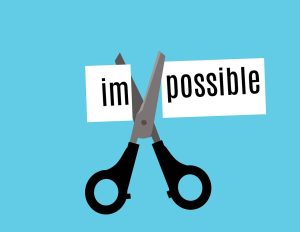
So yes—academics matter. But if you ignore the social-emotional needs of your students, especially those carrying trauma, you’re setting them up to fail. You can’t teach a dysregulated brain. That’s just neuroscience. This isn’t about doing less academics. It’s about building the conditions where real learning is even possible.
Building Stamina and Regulation in Students
Dr. Krishnamoorthy: I’ve read about the red, yellow, and green framework to think about where student’s nervous systems are sitting at any given time. Could you share how that gets used in your school?
Mr. Gordon: That framework gets used across the board. When a brain is too escalated and elevated, the limbic system shuts down and prevents the cortex from processing. Nothing positive will happen out of that moment until you bring that brain down and de-escalate it. When it’s in the yellow zone, that’s where they’re engaged.
The green zone would be a student who comes here stoned or without sleep. Green is just wholly disengaged from the process at that point. They’re so de-escalated, they’re relaxed, and that’s the negative side of it. They might need to meditate or do yoga to put themselves into that state of relaxation when they’re just at peace, and their mind is calm. Green is not necessarily negative itself, but it is a disengaged brain from the active learning process.
As a teacher, the ideal place that I would like the students to be is in the yellow state where the brain is ramped up a little. They’re engaged, they’re thinking, they’re processing, they’re challenging themselves. For example, my students had to do presentations yesterday and will do them in my class again today. I expect this to be right on that red/yellow border where they’re nervous. They’re hyper-engaged and aroused, yet they’re still able to process, think, and be in that space. If that pushes too far, which it will for some of my students, just getting up and speaking will push them into the red, I will have to recognise that and provide them with an opportunity to deescalate back down to yellow. Maybe they won’t even be able to do their presentation, and we’ll do it together privately on the side, but they still do it. Once a brain escalates too high, if a student is in the red, it means the limbic system is shutting down. We teach the students that scale so they can respond to us and say, “Hey, I’m here right now”. They can point to the red if they can’t speak, and I’m like, no sweat, I get it. I’m not going to try to have this conversation right now. Let’s go home. In fact, go upstairs and hang out. We’ll talk to you tomorrow once you get yourself back together again, and let’s have that conversation.
Challenges for the Future
Dr. Krishnamoorthy: What is your hope for this school going forward—and what are the biggest challenges you see on the horizon?
Mr. Gordon: We’re now six or seven years into this journey, and I think we’ve maxed out what we can do through relationships alone. We’ve seen incredible gains from having the right educators in place—people with the skillset to build trust, form authentic connections, and respond to students with compassion. And we’ve seen those relationships translate into academic success, even in a short time.
A study conducted here a few years ago compared students at our school with high ACE scores to those with low ACE scores. Within just a month or so, the academic performance between the two groups was virtually indistinguishable. That’s a huge win. It shows that relationships can close the gap—at least in the moment.
But here’s the problem: while we’re helping students succeed inside this environment, we’re not yet doing enough to prepare them for what comes after. We’re not equipping them with the deeper mental health tools they need to carry that success into the next chapter of their lives. And that’s incredibly frustrating.
These students leave our school and lose the support system we’ve built around them. And when that happens, many don’t yet have the internal resources to manage on their own. We’re not doing enough of the repair work to get them ready for that. And it keeps me up at night.

What’s even more frustrating is that no public school in the U.S.—that I’ve found—is trying to integrate mental health and education in a meaningful, systemic way. I started looking globally, trying to find someone doing this well. And the only real model I could find was in Australia.
The irony? There is literally no place on the planet further from us than Melbourne, Australia. That knowledge base—the systems thinking, the integration of education and mental health—feels completely out of reach, both geographically and financially.
So where do we go from here?
The next step for us has to be bringing in a brilliant clinician. Someone who can partner with us. Someone who understands both the mental health world and the school system. We have everything else in place—the relationships, the readiness, the culture. We’re set up to implement something powerful.
But we don’t have the tools. We don’t have the intervention. We don’t have a system, a program, or a person who can take us to that next level. And that’s the hard part. We’re eager. We’re ready. But we’re still waiting.
And waiting is hard—especially when we know the students can’t.
Sustaining Trauma-informed Practices
Dr. Krishnamoorthy: That’s exactly what we’re working toward with our program. I’m a clinical psychologist, and Kay brings over 25 years of teaching experience. We’re combining those worlds to develop something practical and meaningful for schools. Hearing about your work is incredibly inspiring—and it’s why we keep promoting what we do.
What messages would you share with teachers who might be struggling—maybe having a rough day with a student or just feeling burnt out—about how to keep going?
Mr. Gordon: I lean on my colleagues. I have a support system of teachers who believe in this work the way I do. We laugh together—sometimes we even laugh about the students. And it’s never from a cruel place. It’s from a place of trust, where we can be honest about the hard moments without judgment. Where I can vent, and no one questions whether I still care about the student—because they know I do.
And sometimes, I need to remind myself who I was as a student. I was brutal in school—disruptive, reactive, difficult. But I didn’t have any negative feelings toward my teachers. It was a game in my head, a power struggle. I’ve learned to remember that the frustration I feel toward a student isn’t always mutual. They’re not necessarily feeling the same way about me. They’re in their own experience, often one that has nothing to do with me.
I also have a picture on the back wall of my classroom—by the clock. It’s of my parents, my sister and her family, and my own family, all walking barefoot on the beach. That’s my happy place. It’s where I feel most centred. And when things are spiralling—when I feel myself getting pulled into a student’s dysregulation—I look at that photo. I pause. I breathe. I remember exactly what it feels like to be standing on that beach.

And in that moment, I tell myself: This isn’t about me. This student is giving me the best version of themselves they can right now. It may not look like much, but it’s all they’ve got. I’m just along for the ride—and I get to choose how I show up in this moment.
That helps me reset. It helps me love the student again. Support them. Set the boundary. Maybe that means they leave the classroom. Maybe that escalation happens. And that’s okay. The relationship isn’t ruined. We’ll revisit it tomorrow.
That’s what works for me. Every teacher needs to find their version of that—whatever helps them step back and separate their emotional response from the student’s behaviour. Because most of the time, we’re not even part of the experience the student is having.
So if that’s true, we might as well choose the experience we want to have in that moment. Choose calm. Choose love. Choose presence.
Chapter Summary
- Understanding the neuroscience of trauma—particularly how it affects brain function and behaviour—is essential to making sense of students’ emotional and behavioural responses.
- A trauma-informed school relies on staff who are aligned in their values and beliefs about children, behaviour, and healing. Consistency in mindset drives consistency in practice.
- When a school’s core values shift toward compassion and regulation, educators are more likely to respond to student behaviour with empathy, rather than control.
- Building authentic relationships with students—and learning to set aside personal emotional reactions during moments of dysregulation—creates the conditions for co-regulation and repair.
- Moving from punitive, out-of-school suspension to a supportive in-school suspension model helps preserve student dignity and connection, while promoting accountability and reflection.
- An on-campus health centre allows for integrated care by addressing both physical and mental health needs, and offers space for clinicians to meaningfully contribute to student wellbeing.
- Adolescents need caring, emotionally present adults—teachers who offer the same relational warmth and nurturance often provided in early childhood education.
Listen to our full interview with Mr. Erik Gordon on our Trauma Informed Education Podcast.
Listen here or scan the QR code for access.
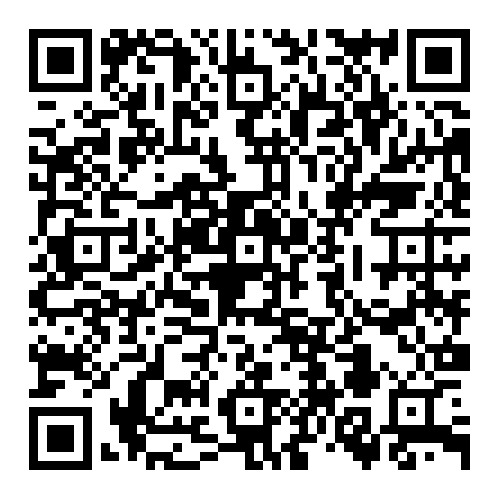
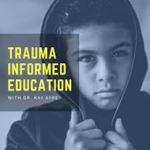
REFERENCES
Ayre, K. & Krishnamoorthy, G. (Hosts). (2019, Jan 08). On Being a Trauma-Informed Teacher with Erik Gordon [Audio podcast episode]. In Trauma Informed Education. SoundCloud. https://on.soundcloud.com/Yz1k7hnugRM7bI5bLm

 Leading the way in trauma-informed practice is Lincoln High School in Washington. The school, its student’s and its staff were the subjects of the documentary “Paper Tigers”, set within and around the campus of Lincoln alternative high school in the rural community of Walla Walla in Washington. The documentary “Paper Tigers” attempts to answer the following questions. What does it mean to be a trauma-informed school? How do you educate teens whose childhood experience has left them with a brain and body ill-suited to learning? Erik Gordon, a science teacher from the Lincoln School, explains how the school has adopted a trauma-informed approach to curriculum development and disciplinary practices.
Leading the way in trauma-informed practice is Lincoln High School in Washington. The school, its student’s and its staff were the subjects of the documentary “Paper Tigers”, set within and around the campus of Lincoln alternative high school in the rural community of Walla Walla in Washington. The documentary “Paper Tigers” attempts to answer the following questions. What does it mean to be a trauma-informed school? How do you educate teens whose childhood experience has left them with a brain and body ill-suited to learning? Erik Gordon, a science teacher from the Lincoln School, explains how the school has adopted a trauma-informed approach to curriculum development and disciplinary practices. When I talk to new teachers, I often start with the brain. Not in a clinical way—but in a way that helps make sense of student behaviour. I explain that the brain has different parts that develop over time. When a young person experiences overwhelming stress or trauma—especially early in life—the parts of the brain responsible for survival can become overactive. That’s the part of the brain that’s always scanning for danger. When it senses a threat, even a small one, it shuts down the thinking brain—what we use for reasoning, reflection, and learning.
When I talk to new teachers, I often start with the brain. Not in a clinical way—but in a way that helps make sense of student behaviour. I explain that the brain has different parts that develop over time. When a young person experiences overwhelming stress or trauma—especially early in life—the parts of the brain responsible for survival can become overactive. That’s the part of the brain that’s always scanning for danger. When it senses a threat, even a small one, it shuts down the thinking brain—what we use for reasoning, reflection, and learning. At the same time, our education system has some structural quirks. Here, teacher unions are strong, which means you can’t easily fire a teacher. What you can do is move them laterally—so sometimes, the teachers a district doesn’t want in the main high school get reassigned to the alternative school. And unfortunately, in some cases, they’re placed there with the unspoken hope that they’ll burn out and quit on their own. That dynamic creates a mix: you’ve got teachers who deeply want to be there, and others who haven’t made the mindset shift.
At the same time, our education system has some structural quirks. Here, teacher unions are strong, which means you can’t easily fire a teacher. What you can do is move them laterally—so sometimes, the teachers a district doesn’t want in the main high school get reassigned to the alternative school. And unfortunately, in some cases, they’re placed there with the unspoken hope that they’ll burn out and quit on their own. That dynamic creates a mix: you’ve got teachers who deeply want to be there, and others who haven’t made the mindset shift. I’ve also set up my own science classroom with this philosophy in mind. One half of the room is for learning. The other half has soft couches, calm lighting, and a de-escalating vibe. It’s intentionally soothing. Students can self-select to step out and go to the ISS room when they need it. They don’t have to ask permission or explain themselves—they just know it’s there if they need it.
I’ve also set up my own science classroom with this philosophy in mind. One half of the room is for learning. The other half has soft couches, calm lighting, and a de-escalating vibe. It’s intentionally soothing. Students can self-select to step out and go to the ISS room when they need it. They don’t have to ask permission or explain themselves—they just know it’s there if they need it. In Paper Tigers, you see us texting students. You see us saying things like, “I love you.” And for some, that feels uncomfortable in an educational setting. But there are safe, appropriate ways to express that care. I’ll say, “Love you, man” to a student walking out the door, and it lands. It doesn’t feel weird. It feels real. No student walks away from that feeling disrespected.
In Paper Tigers, you see us texting students. You see us saying things like, “I love you.” And for some, that feels uncomfortable in an educational setting. But there are safe, appropriate ways to express that care. I’ll say, “Love you, man” to a student walking out the door, and it lands. It doesn’t feel weird. It feels real. No student walks away from that feeling disrespected. But then I ask, “What if your ‘why’ is to be great at life?” What if this class—this school—is just a step toward becoming the best version of yourself?
But then I ask, “What if your ‘why’ is to be great at life?” What if this class—this school—is just a step toward becoming the best version of yourself? So yes—academics matter. But if you ignore the social-emotional needs of your students, especially those carrying trauma, you’re setting them up to fail. You can’t teach a dysregulated brain. That’s just neuroscience. This isn’t about doing less academics. It’s about building the conditions where real learning is even possible.
So yes—academics matter. But if you ignore the social-emotional needs of your students, especially those carrying trauma, you’re setting them up to fail. You can’t teach a dysregulated brain. That’s just neuroscience. This isn’t about doing less academics. It’s about building the conditions where real learning is even possible. What’s even more frustrating is that no public school in the U.S.—that I’ve found—is trying to integrate mental health and education in a meaningful, systemic way. I started looking globally, trying to find someone doing this well. And the only real model I could find was in Australia.
What’s even more frustrating is that no public school in the U.S.—that I’ve found—is trying to integrate mental health and education in a meaningful, systemic way. I started looking globally, trying to find someone doing this well. And the only real model I could find was in Australia. And in that moment, I tell myself: This isn’t about me. This student is giving me the best version of themselves they can right now. It may not look like much, but it’s all they’ve got. I’m just along for the ride—and I get to choose how I show up in this moment.
And in that moment, I tell myself: This isn’t about me. This student is giving me the best version of themselves they can right now. It may not look like much, but it’s all they’ve got. I’m just along for the ride—and I get to choose how I show up in this moment.![]() Listen to the full interview on the Trauma-Informed Education Podcast
Listen to the full interview on the Trauma-Informed Education Podcast





